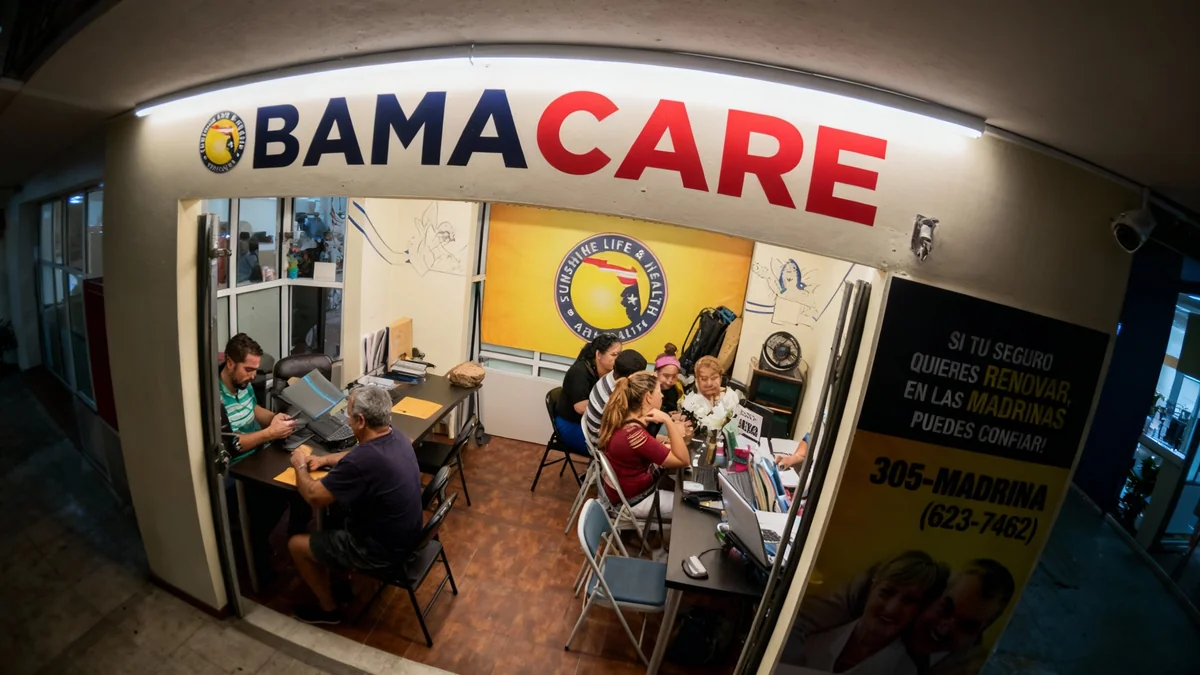Health insurance premiums under the Affordable Care Act (ACA) are set for significant increases in 2026, according to initial data released by about a dozen states. This development gives consumers a first look at potentially higher costs as Congress continues to deliberate on the extension of federal subsidies that have kept coverage affordable for millions.
Key Takeaways
- Initial 2026 health insurance prices are now public in states including California, New York, and Nevada.
- Many consumers are facing sharp premium increases for plans purchased on the ACA marketplaces.
- The price hikes coincide with uncertainty over the future of enhanced federal subsidies set to expire.
- The annual open enrollment period is scheduled to begin on November 1, 2025.
- Some regions may also see fewer insurance carriers, limiting consumer choice for the upcoming year.
Early Glimpse of 2026 Insurance Premiums
As the November 1 open enrollment period approaches, several state-run health insurance marketplaces have begun publishing their rates for 2026. This preliminary data offers the first concrete evidence of the rising cost of health coverage for the upcoming year. States providing this early preview include major markets like California and New York, as well as Nevada, Maryland, and Idaho.
For individuals and families who purchase their own insurance, these initial figures paint a concerning picture. The rate increases are described as sharp in many markets, signaling a potential return to the affordability challenges that existed before recent government interventions. The federal marketplace, HealthCare.gov, which serves 28 states, is expected to release its pricing information before the end of October.
Background: The ACA Marketplace
The Affordable Care Act, often called Obamacare, created health insurance marketplaces where individuals can shop for and compare health plans. These marketplaces were designed to make purchasing insurance easier and more transparent. A key component of the ACA is the provision of subsidies to help lower-income and middle-income individuals afford their monthly premiums.
The early release of this pricing data allows consumers to prepare for the upcoming enrollment season. However, it also highlights the critical role that federal policy plays in the final cost of health insurance for a significant portion of the population.
The Decisive Role of Federal Subsidies
A central issue driving the concern over rising premiums is the potential expiration of enhanced federal subsidies. These subsidies, which were expanded during the pandemic and later extended, have substantially lowered out-of-pocket costs for millions of Americans using the ACA marketplace. They work by capping the amount an individual has to pay for a benchmark plan as a percentage of their income.
Currently, Congress is debating whether to extend these enhanced subsidies beyond their scheduled expiration date. If lawmakers fail to act, the financial assistance that has made coverage accessible for many will disappear. This would mean that consumers would be responsible for a much larger share of their health insurance premiums, compounding the effect of the underlying rate hikes.
According to recent health policy analysis, the expiration of enhanced subsidies could cause the average marketplace enrollee's monthly premium to double or even triple, depending on their income level and location.
The uncertainty surrounding this legislative decision creates a difficult environment for consumers trying to plan their finances for 2026. The final cost of their health insurance hangs in the balance, pending a decision from Washington D.C.
Impact on Household Budgets
For many families, the combination of rising base premiums and the potential loss of subsidies could strain household budgets. Health insurance is a significant expense, and a sudden, large increase could force difficult choices between maintaining coverage and paying for other necessities like housing, food, and transportation.
Health policy experts warn that a substantial increase in costs could lead to a rise in the number of uninsured Americans. Many may find the new, unsubsidized prices simply unaffordable, forcing them to drop their coverage and risk facing major medical bills without financial protection.
Navigating a Changing Marketplace
Beyond the issue of rising costs, consumers in some areas may also face a shrinking number of choices. Several insurance companies have announced plans to exit certain markets or reduce their plan offerings for 2026. This trend reduces competition, which can often lead to higher prices and fewer innovative plan designs.
"When there are fewer insurers in a market, there's less pressure to keep prices competitive. This can result in both higher premiums and more restrictive networks for consumers," noted one industry analyst.
A reduction in choice means that some individuals may no longer have access to their preferred doctors or hospitals if their current insurer leaves the market. They will be forced to find a new plan and potentially a new set of healthcare providers, creating disruption in their continuity of care.
What to Do During Open Enrollment
As the November 1 start date for open enrollment nears, experts advise all consumers to actively shop and compare their options, even if they are satisfied with their current plan. Here are some steps to take:
- Review New Rates: Once available, carefully check the 2026 premium for your current plan and any alternatives.
- Check Provider Networks: Verify that your preferred doctors, specialists, and hospitals are still included in the network of any plan you consider.
- Compare Total Costs: Look beyond the monthly premium. Consider deductibles, copayments, and the out-of-pocket maximum to understand the full potential cost.
- Stay Informed on Subsidies: Keep track of news from Congress regarding the extension of enhanced subsidies, as this will directly impact your final cost.
The upcoming open enrollment period will be particularly important. With significant changes in both prices and plan availability, passively renewing an existing plan could be a costly mistake. Taking the time to research and select the best option will be crucial for managing healthcare costs in 2026.





